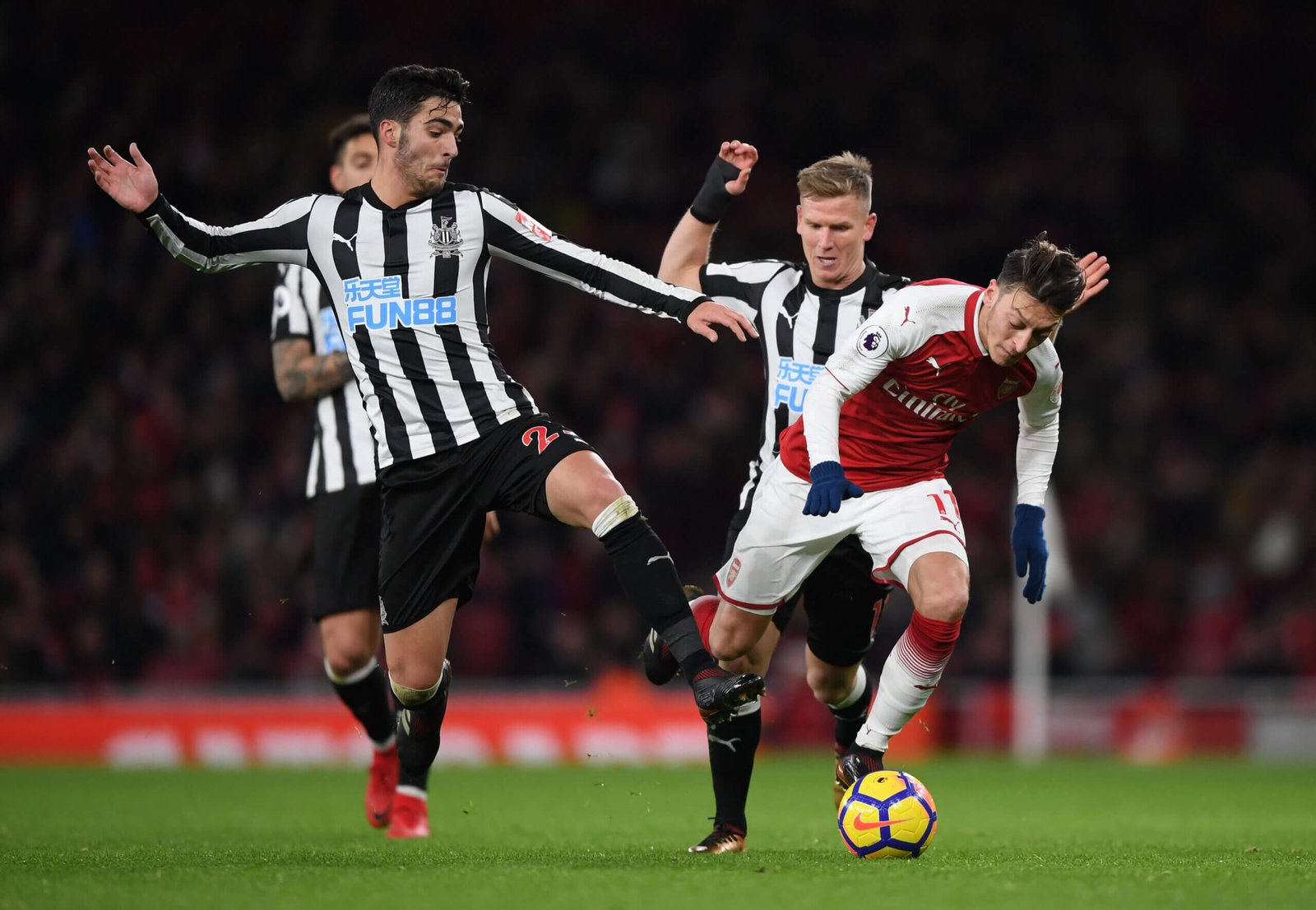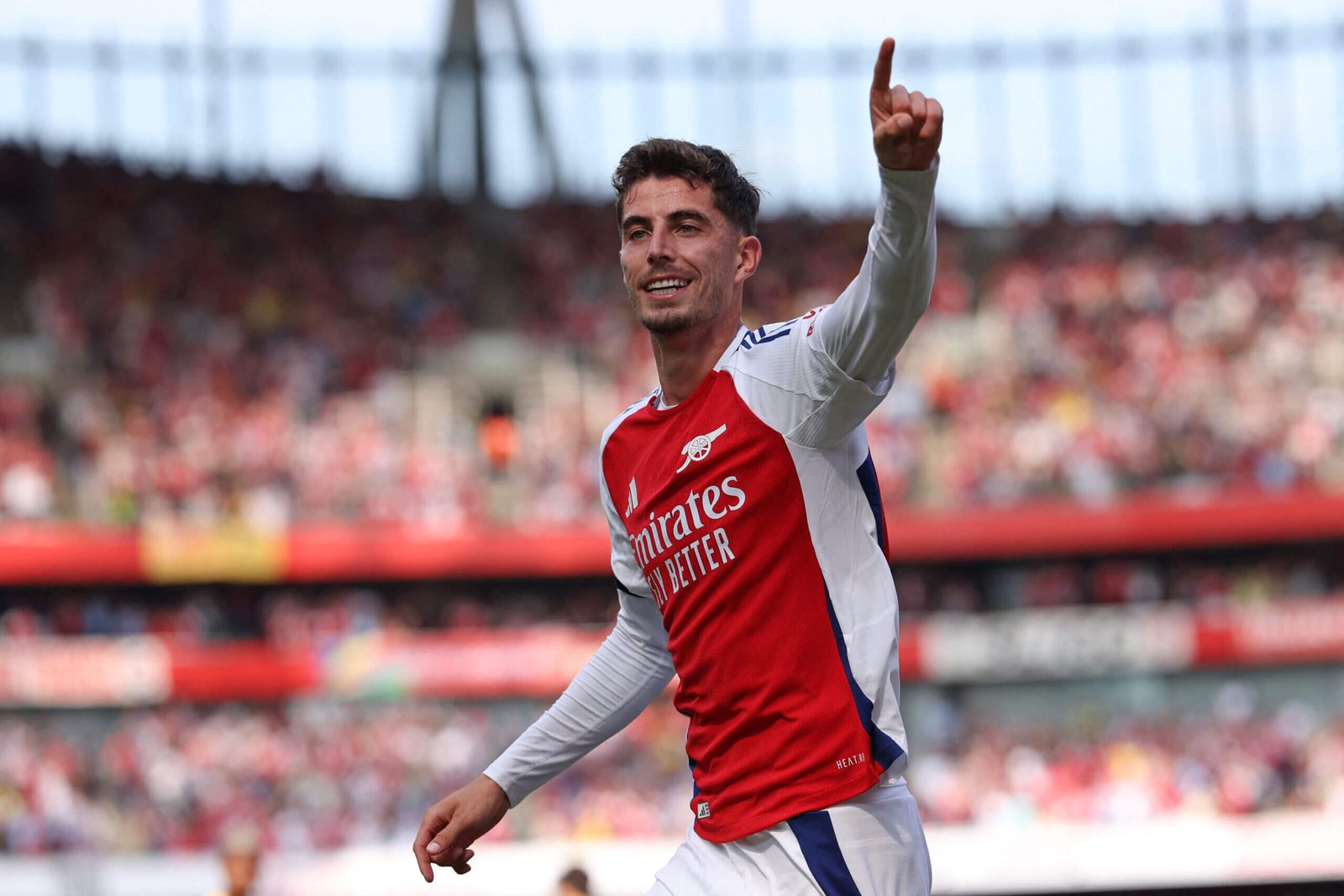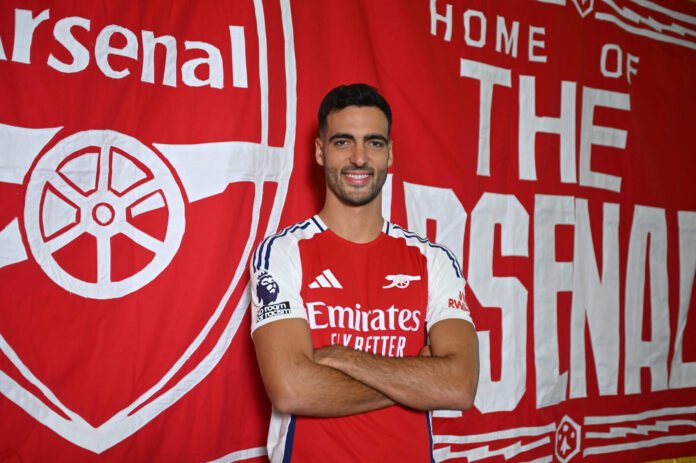Mikel Merino is a ‘win-now’ signing for Arsenal.
In some respects, this is an atypical deal for the club. A fee which could total €37.5million (£31.6m; $41.8m) is a significant price to pay for a 28-year-old with 12 months remaining on his contract with Real Sociedad — so much so that Arsenal deliberated before proceeding with the transfer. This signing exists outside of the overarching recruitment philosophy.
Ultimately, though, Arsenal were convinced this was a deal that could help them in the short-term; the type of signing that could help them prise the title away from Manchester City in the next couple of years.
The last 28-year-old Arsenal signed was Leandro Trossard in January 2023. The Belgian has made a significant contribution to Arsenal’s progress over the past 18 months. Arsenal believe their youthful foundation enables them — perhaps even obliges them — to pepper their squad with experience. “It’s very simple,” Arteta said when Trossard joined. “The squad can absorb right now a player of 28 years old — with the right experience, the right versatility and the right quality.”
Arsenal believe Merino has attributes that should enable him to hit the ground running — he has played in England before, having spent the 2017-18 season at Newcastle, he’s a former team-mate of Martin Odegaard at La Real, and has an inherent understanding of Arteta’s positional tactical system.
Merino was part of Spain’s Euro 2024-winning side (Ian MacNicol/Getty Images)
This is a deal that has been coming for some time. Arteta has followed Merino for years — Arsenal contemplated a move for him last summer when Granit Xhaka left. In the winter of 2023, Merino informed La Real that he dreamt of returning to the Premier League.
Right up until the last few weeks, La Real persisted in their attempts to persuade Merino to renew a contract that expired in 2025. They knew, however, that it would be an uphill struggle — especially once Arsenal’s interest became known.
Arsenal first made informal contact with Real Sociedad during the Basque club’s pre-season trip to Japan in early July. They were open about their interest in Merino and the fact they understood that the player wished to join them.
La Real were also aware of interest from Atletico Madrid, but the player did not entertain it. His focus was on Arsenal. Conversations between Merino and Arteta had persuaded the Spanish international that his future lay in north London.
So why the delay? Despite Arsenal’s confirmed interest, a formal offer did not arrive until August.
While Arteta was convinced that Merino was the right fit, there were some high-level conversations among the Arsenal hierarchy about whether it was the right deal to do. The club recognised that adding 28-year-old Merino to a central midfield that already included Thomas Partey (31) and Jorginho (32) was not necessarily ideal.

Merino’s previous spell in England came with Newcastle United, who he joined in 2017 (Shaun Botterill/Getty Images)
But Arsenal were not particularly taken with the midfield options available on the market this summer — either at No 6 or No 8. Arteta is a long-term admirer of Merino’s Real Sociedad team-mate Martin Zubimendi, but the release clause in his contract required the entire €60million fee to be paid upfront. In the context of that difficult market, opting for Merino — a known quantity with Premier League experience — became more appealing.
Arsenal also waited until they were confident of a significant outgoing before accelerating the negotiations. Arsenal’s strategy this summer has been focused on improving, not expanding the squad; when they signed Riccardo Calafiori, they waited until Emile Smith Rowe’s move to Fulham was all but certain. With Eddie Nketiah seemingly headed for the exit door, Arsenal ramped up talks over Merino.
An initial bid of €30million with €5m in potential add-ons was rejected as Real Sociedad held out for a higher price. Last week, La Real president Jokin Aperribay flew to London, with face-to-face talks on his agenda. One of the outstanding issues was over a solidarity payment worth around €1million. Talks advanced significantly on Wednesday before a compromise was reached on Thursday: an initial fee of €33.5million with €5million in variable clauses.
On Friday morning, the two clubs formalised their agreement. Merino said his farewells at the Zubieta training ground before flying to London for a medical.
Arsenal hope Merino can be the midfielder Kai Havertz was intended to be.
When Arsenal signed the Germany international from Chelsea last summer, they could not have been more upfront — even if that’s not a poor choice of words — about their plans. In Havertz’s unveiling on Arsenal’s official website, Mikel Arteta said: “He will bring a huge amount of extra strength to our midfield.” Havertz was even filed as a midfielder on the website’s squad page.
But the best-laid plans do not always come to fruition. As the season wore on, it became increasingly clear that Havertz was better at centre-forward. “A lot of times, the players decide where they have to play,” admitted Arteta. “You can have certain ideas but then you see certain relationships and it flows. When it flows, you have to let it go. That’s what is happening with Kai.”
As Havertz moved forward, so did Declan Rice. The former West Ham man had been signed to play as a No 6 but, as Arsenal’s team evolved, he took on a more advanced role as a left-sided No 8. It was left to Jorginho and Partey to share responsibilities as the deepest-lying midfielder.
It worked. Havertz developed into the club’s first-choice striker, but Arteta still liked what the former Chelsea man brought to the midfield: physical presence, dominance in duels, stamina and intelligent running. He needed two Havertz’s: one to lead the line, another to support from midfield.
That is why Arsenal’s interest in Merino has developed. The parallels between the Spaniard and Havertz, certainly in terms of physicality and tactical intelligence, are striking. His signing allows Arsenal to revert to Arteta’s ‘Plan A’ in midfield: fielding Rice as the No 6, with Merino paired with Odegaard as No 8s. Arsenal have talked of Merino filling what is still occasionally referred to as “the Xhaka role”, even 12 months on from the Swiss international’s departure.
This is not a hard and fast rule. A hallmark of recent Arsenal signings has been their versatility — and Arteta’s willingness to be flexible in their deployment. Rice will doubtless play more football at No 8 this season. Arsenal believe Merino can offer cover at No 6 if required, but the direction of travel appears to be a midfield three of Rice, Merino and Odegaard.

Merino is expected to possess some of the traits Arsenal initially expected from Havertz (Adrian Dennis/AFP via Getty Images)
This signing leaves Arsenal with some work to do over the coming windows. Given the respective ages of Merino, Partey and Jorginho — the latter two are out of contract next summer — Arsenal know an injection of youth will be required in the next couple of years. The club recognise that a more youthful midfield signing will have to arrive in the next couple of transfer windows.
But Trossard has shown that 28 is not too late to make a significant impact; Ian Wright was two months off 28 when he joined Arsenal. Although he arrives as a battle-hardened veteran, Merino is still almost four years younger than his predecessor Xhaka.
Another advantage of signing Merino is that he could act as a bridge to afford young midfielders like Ethan Nwaneri and Myles Lewis-Skelly time to stake their claims for a first-team place.
But for now, Arsenal’s focus is on the 2024-25 season and winning the Premier League. The signing of Merino is perfect proof of that.
(Other contributors: Mario Cortegana and Guillermo Rai)
(Top photo: Stuart MacFarlane/Arsenal FC via Getty Images)
Read the full article here


